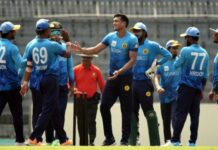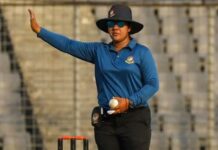India sit at around 100 in the FIFA rankings, Maldives and Nepal have been playing competitive football for a long time while Bhutan are also showing potential at international level. These improvements are due to the countries’ effective plans that are focused on youth development.
India have always been the superior side in South Asia in terms of performances, domestic standards, infrastructure, club structur and youth development. However, the likes of Maldives, Nepal and Bhutan have been progressing, courtesy of the ‘educated footballers’ coming through youth development.

Yet, Bangladesh — who have been languishing at the bottom of the rankings — do not look at these neighbours as development models. Long-serving Bangladesh Football Federation president Kazi Salahuddin has always pointed to European countries as examples whenever the development processes of other South Asian nations were presented before him in the last 12 years, although the BFF boss never imported any ideas from the countries he was so fond of citing above his neighbours.
That the federations in India, Nepal and Bhutan operate football academies is not news. It has now been seen that that initiative is paying dividends, but the BFF believes it is the duty of clubs to operate football academies, not the federation, which had suspended a FIFA-supported academy programme despite a group showing promise by clinching the inaugural SAFF U-16 Championships in 2015).
Although nurturing youth is the duty of the clubs in the top-tier Bangladesh Premier League as they are bound by AFC guidelines to have permanent youth development programmes, most clubs have youth programmes only in name.
In 2010, with the aim to provide young players with more minutes against experienced players, the AIFF launched a team titled Indian Arrows, comprising of young players from different clubs and gave it approval to take part in top-tier I-League.
India is now reaping the rewards of that project and their national team now features players like Gurpreet Singh Sandhu, Jeje Lalpekhlua, Pritam Kotal, Pronay Halder, Lalrindika Ralte, Halicharan Narzary, who are all products of Indian Arrows. Meanwhile, promising players like Narender Gahlot and Amarjit Singh were in the pipeline of the Blue Tigers.
At the start of the professional football league in 2006, roping in at least five U-19 players was mandatory for each clubsand fielding those players in competitive matches for a certain period was also compulsory, but now there are no such obligations for the result-oriented clubs.
Thus, youth footballers have been deprived of quality minutes against hardened players this season and warmed benches most of the time. The BFF can easily take a pilot project to nurture young players by forming a youth team that will compete in the professional football league as well as international age-group tournaments.
They can assign local coaches to coordinate with the national team’s foreign coaches to train them and improve’ physical, technical and tactical development.
It is believed that the youth team would not be very expensive for the BFF [which spends approximately Tk 30 crore per year] as the BPL clubs completed their season within Tk one crore each, including payments to foreign players.
Apart from their own expenditure, the BFF can also get sponsors for the team and make the nation hopeful about the revival of what was once the country’s most popular.










